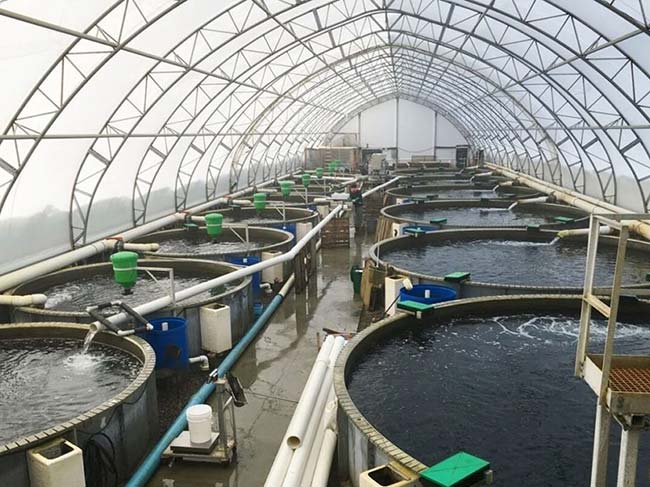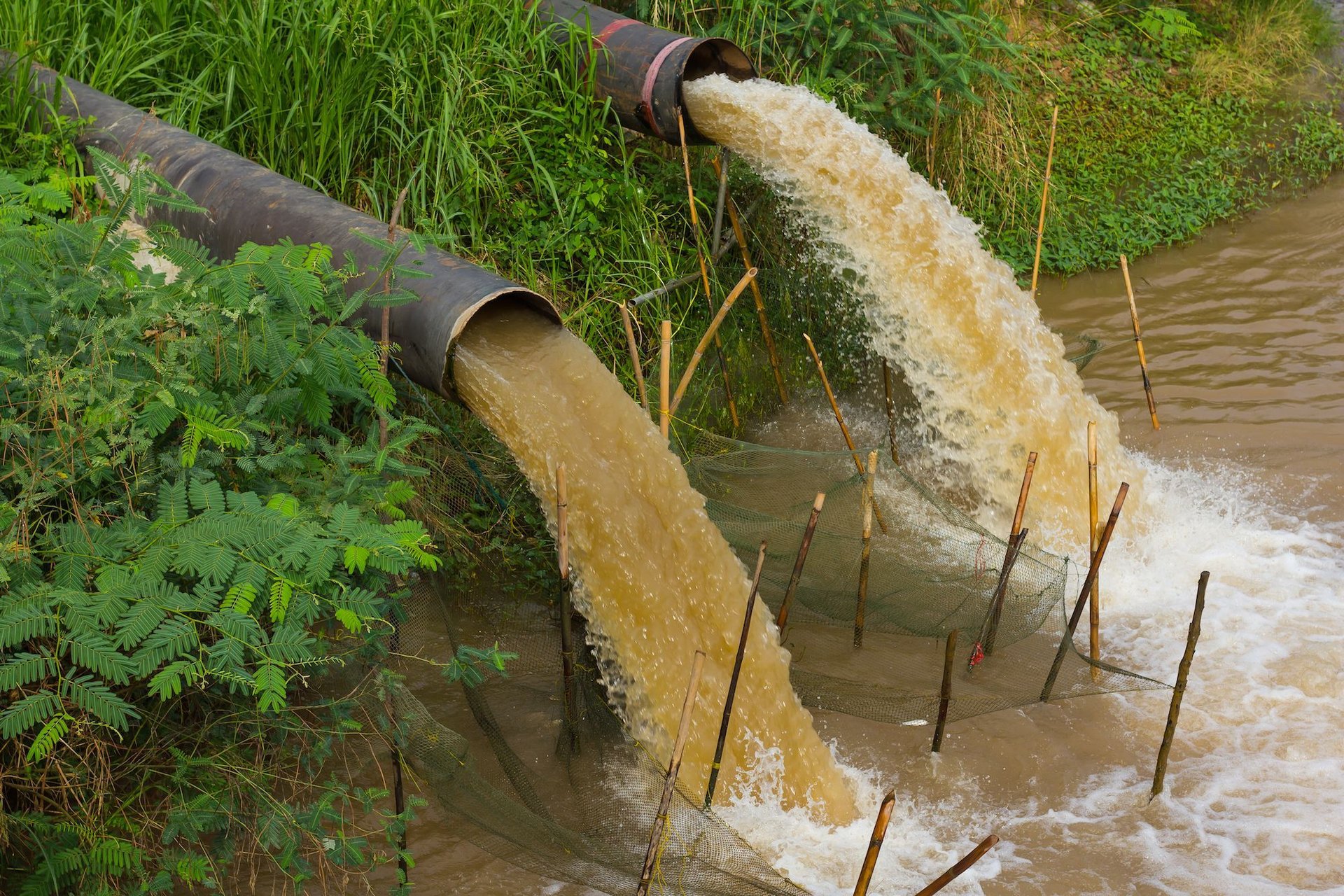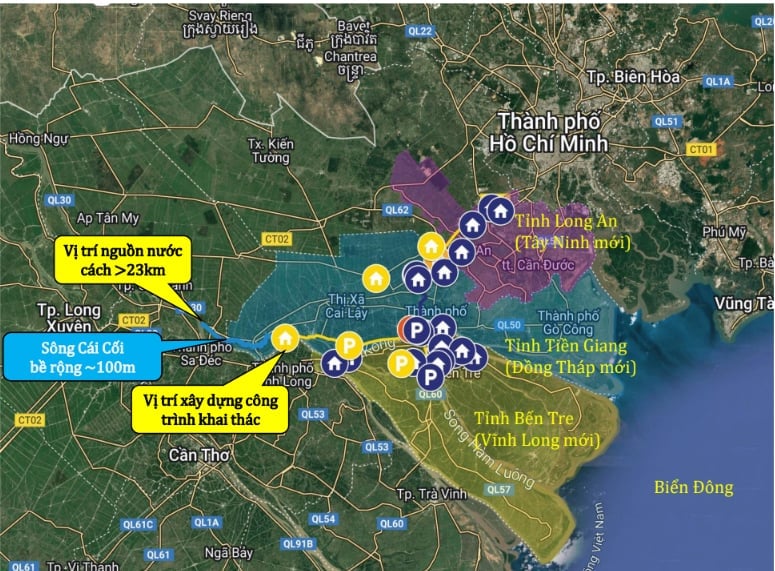December 2, 2025 | 09:59 GMT +7
December 2, 2025 | 09:59 GMT +7
Hotline: 0913.378.918
December 2, 2025 | 09:59 GMT +7
Hotline: 0913.378.918
At the conference “Advanced and Efficient Water Supply and Sanitation Technologies”, a highlight of the Vietnam Water Week 2025 held last week, numerous cutting-edge technologies were introduced, promising to boost water treatment efficiency, reduce costs, and be more environmentally friendly.
From practical research and application, Professor Dr. Nguyen Viet Anh of the Institute of Environmental Science and Engineering (Hanoi University of Civil Engineering) presented three standout solution groups: applying ozone in water treatment, using microbubbles and nanobubbles to control pollution, and digital transformation in the management and operation of water supply systems.

Application of ozone in aquaculture water treatment. Photo: Minh Hoang.
According to Prof. Dr. Nguyen Viet Anh, ozone is an oxidizer capable of removing many organic and inorganic compounds and microorganisms causing disease within a short contact time. Ozone applications can be implemented in both pretreatment and posttreatment stages: removing manganese and hydrogen sulfide, deodorizing algae odors, increasing coagulation efficiency, and disinfecting and removing trace contaminants.
Notably, when combined with hydrogen peroxide (H2O2), oxidation effectiveness is further enhanced, enabling the treatment of hard-to-degrade organic compounds, pesticides, or odor- and color-causing substances. Ozone technology not only improves the quality of the final water but also reduces the amount of treatment chemicals, moving toward a safer and more environmentally friendly processing process.
Another solution emphasized by Prof. Dr. Nguyen Viet Anh is the use of microbubbles and nanobubbles in water treatment and lake pollution control. When released into water, these bubbles drag along pollutants, algae, and organic matter to the surface for removal. They also help increase dissolved oxygen, improve water quality, and maintain ecological balance.
“A unique feature is that nanobubbles can persist in water for months to years, creating a long-lasting effect on water quality. The bubble technology developed by IESE has proven effective not only in drinking water, wastewater, and sludge treatment but also in aquaculture, high-tech agriculture, and healthcare. This is regarded as a revolutionary approach to managing urban and rural water quality,” affirmed Prof. Dr. Nguyen Viet Anh.
Beyond technical solutions, he noted that digital transformation is indispensable in managing and operating water supply systems. The use of digital technologies such as artificial intelligence (AI), the Internet of Things (IoT), Big Data, and digital twins helps monitor, forecast, and optimize water distribution networks.
Significantly, digital management systems enable online monitoring of water quality, leak detection, reduction of losses, and improved customer service. “This is the inevitable path for Vietnam’s water utilities to enhance governance efficiency, meet safety, transparency, and sustainability requirements in the 4.0 industrial era,” emphasized Prof. Dr. Viet Anh.
From the perspective of a clean-water expert, Balint Horvath, Secretary-General of the Hungarian Water Association (HWP), shared a comprehensive view of the arsenic contamination challenge in groundwater and the advanced technologies that address it.
Studies show that arsenic affects more than 2.5 billion people worldwide, particularly in countries like Pakistan, India, and Vietnam. With the World Health Organization’s permissible limit of 10 µg/L, many regions face severe health risks such as cancer, heart disease, and skin disorders from using arsenic-laden water.

Using adsorbent materials to rescue arsenic-contaminated groundwater. Photo: Minh Hoang.
In response, the Hungarian Water Association (HWP) has developed and implemented regenerable adsorbent material technology, a significant advancement in drinking water treatment. This technology uses cerium-based materials that not only effectively remove contaminants such as As, Fe, Mn, F-, B, and I but also ensure sustainability, cost savings, and environmental friendliness.
A key feature is the material’s regenerability, which minimizes hazardous waste, requires no chemical dosing, consumes no extra energy, and preserves water’s taste and mineral composition.
Mr. Balint Horvath noted that systems like PurAID and PuraWELL have been deployed in several countries, including Romania and India, with capacities ranging from a few thousand to tens of thousands of liters per day. Notably, a point-based technology model with investment costs under 25 euros per person and operating costs under 5 euros per person per year has proven highly effective in delivering safe drinking water to rural areas.
In Vietnam, HWP has partnered with the Vietnam Water Supply and Sewage Association (VWSA) to implement pilot projects in Quang Binh and to host a technical conference in Hanoi to promote technology transfer and raise public awareness about building sustainable water supply systems.
Proposing a solution to provide drinking water for the Mekong Delta, Lieu Manh Huy, Chief Executive Officer of DNP, proposed exploiting and transporting raw water from the upstream Tien River. The upstream water intake is divided into phases according to saltwater intrusion dynamics. Main transmission lines will be through closed pipelines with booster stations along highway corridors, delivering raw water to downstream water treatment facilities.

Raw water extraction and transmission solution along the northern Tien River. Photo: GNP.
Mr. Lieu Manh Huy stated that this solution would extract raw water from upstream and transport it via closed pipelines to downstream water treatment plants. The raw water intake point would be selected to suit the current saltwater intrusion situation and would be safely integrated with fresh water reservoirs in localities. In extreme scenarios, the salt-front could advance deeper, prompting relocation of the raw water intake.
The main transmission line along the highway corridors is forming, facilitating land clearance and installation while reducing investment costs.
This solution has been updated in the national planning and has been realized as a project. It is currently undergoing legal procedures after receiving approval from the Ministry of Construction and is expected to begin construction in Q4 this year and be completed in Q4 2026. It is regarded as a flagship project with great potential to secure sustainable livelihoods for millions of people in the Mekong Delta.
Vietnam Water Week 2025 ran from August 20 to 22, under the theme “Vietnam’s Water Sector in a New Era: Challenges and Opportunities". Numerous digital solutions and cutting-edge technologies were showcased and demonstrated at 200 expo booths, illustrating a strong move to meet the economic and social development needs and to adapt to climate change.
Translated by Linh Linh

(VAN) The large-scale agroforestry investment project aims to develop a leading sustainable agro-industrial center in Angola.
/2025/11/28/3433-1-212821_213.jpg)
(VAN) Many localities across the coconut land of Vinh Long are replicating emission-reducing models in production and daily life, contributing to the targets for emission reduction and green economic development.

(VAN) The green transition is an inevitable path for collective economy to achieve balanced growth and align with global trends.

(VAN) The TH Group is not only Vietnam’s leading clean-milk producer; it is also leaving a strong mark on sustainable development as it pursues the goal of carbon neutrality.
/2025/11/27/3830-1-152901_403.jpg)
(VAN) Dong Nai is developing its key crop areas, expanding planting area codes, and applying high technology to increase the value of agricultural products, aiming at a green and sustainable agriculture.

(VAN) Tay Ninh’s livestock sector is undergoing a major transformation, applying high-tech, closed-loop circular models to build sustainable value chains.
/2025/11/26/3627-4-082628_818.jpg)
(VAN) From a small café on the red basalt highlands, Le Van Hoang started a business with clean coffee, building Enjoi Coffee into a symbol of organic agriculture in the Lam Dong plateau.